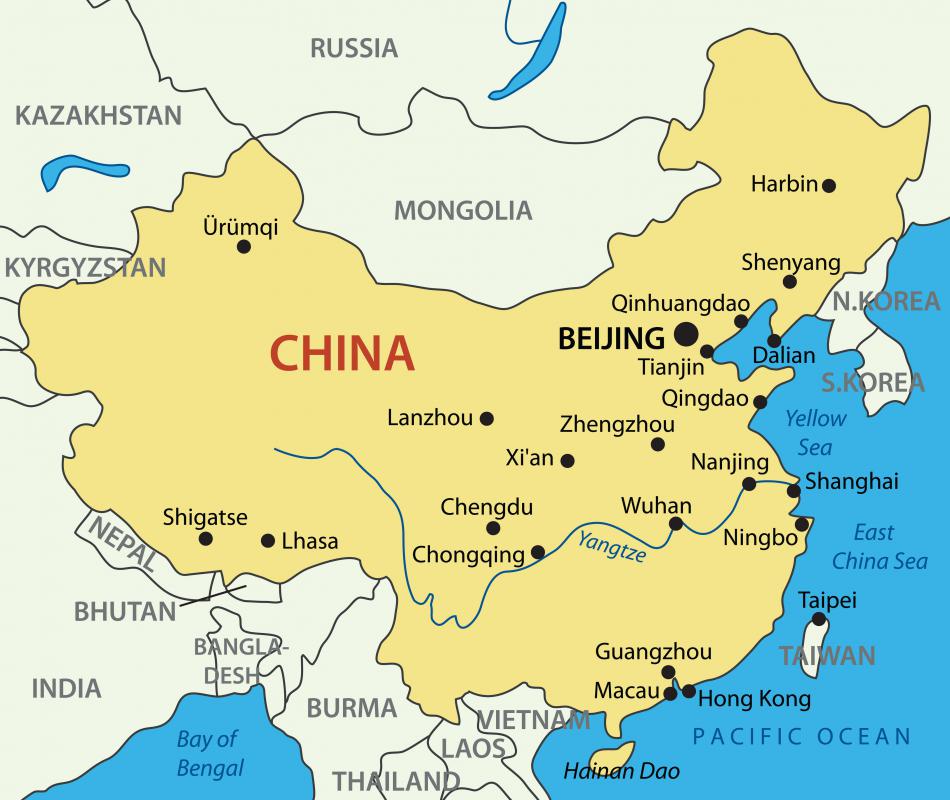At WiseGEEK, we're committed to delivering accurate, trustworthy information. Our expert-authored content is rigorously fact-checked and sourced from credible authorities. Discover how we uphold the highest standards in providing you with reliable knowledge.
What is Kaolin?
Kaolin is a soft white mineral that has a large array of uses. It is most commonly found in the form of a fine clay that was originally produced in China, which is why this material is sometimes referred to as “China clay.” Among the many uses for this mineral are the paper industry, medications, skincare products, porcelain, and cosmetics. Sources of it can be found all over the world, including the United States, China, Brazil, Australia, and parts of Eastern Europe.
The name comes from the Chinese “Gaoling,” a reference to a mountain that provided an early source of the raw mineral. The Chinese used it to produce their famously fine porcelain, and when European explorers were introduced to Chinese ceramics, many of them remarked on the delicate quality of the work. This was made by possible by kaolin, a material that Europeans were not familiar with, and European ceramicists spent centuries trying to replicate the techniques used to produce it.

Today, the secret of Chinese ceramics is out, and manufacturing companies all over the world use kaolin in their ceramics. In high concentrations, the mineral produces fine white pieces with a high level of tensile strength, and it can be used to produce several styles of ceramic. Clay made with it can also be combined with other clays to create specific blends.

The mineral also has an ancient use as a skincare product. Like other clays, it is very absorbent, and it can pull oils and dirt out of the skin. It is commonly used in face masks or as an additive to baths to soothe the skin, and it is also included in numerous cosmetics. Powdered forms may be dusted on the face to absorb oil and reduce greasiness, while mineralized creams can be used to soothe dry skin or to reduce oiliness, depending on how they are formulated. Companies that carry natural skin care products often stock pure kaolin, which people can use to make their own cosmetics and skin care products.

Another historic use of this mineral is as a remedy for gastrointestinal upset. People once ate it because the clay coated the stomach to soothe irritation, and it absorbed bacteria and viruses that caused disease, as well as absorbing loose water, which caused the stools to firm. Some cultures continue to eat clays for stomach pain, and the mineral has also been integrated into many stomach care products, such as the liquid suspensions people take to treat diarrhea.

One of the most widespread uses of kaolin today is in paper manufacturing. The mineral is used to coat and fill paper, and the paper industry demands huge volumes of it annually. Varying levels of the mineral can be used to change the texture and appearance of paper products.
AS FEATURED ON:
AS FEATURED ON:















Discussion Comments
I no longer recall how it is done, but I am aware that at one time kaolin (in some form of "clay on hormones"), acted as a waterproofing agent for military rain gear, and I am speaking of way back when, before silicone and other water-proofers had been discovered for such uses.
The Hindu use the stuff (in their mountains) to heal an amazing number of skin conditions and I've read the Chinese have some (quite ancient) "potions" with kaolin for various forms of facial skin care that only the upper 1 percent (in China) can afford.
Of course, America uses the most of that stuff in cosmetics (and even as a "dry lubricant" in some instances). The stuff can be found most anywhere in the world (except Antarctica, only because you'd need one hell of a hole just to get started mining).
Also, when Mt. Saint Helens 'blew,' a notable amount of kaolin was brought up from who knows how deep? (And was deposited everywhere the eruption cloud went, or, at least, that's what was said at the time just after she went). I can't find anything to back me up on that much.
We sell processed Kaolin to the general public. It is approx. 40 micron which is ideal for exfoliating and deep cleaning.
I do pottery as a side hobby, and I've found that you get the prettiest pieces out of hydrous kaolin. I know some people like to use calcined kaolin (the kind that they put in white paint), but I really think that hydrous kaolin has a nicer feel to it. Do any of you fellow readers do pottery, and if so, do you like kaolin or another material?
I've been recently wanting to buy some kaolin in bulk to make my own skin care products, but it seems like all the kaolin suppliers I find only sell industrial grade kaolin.
Does anybody know if I can find a company that sells cosmetics-grade kaolin, or do I just need to write to one of the big kaolin companies, like Thiele Kaolin or Paroles kaolin and ask if they sell any cosmetics-grade kaolin?
I love kaolin skin-care products, especially kaolin face masks. I've found that white kaolin clay and bentonite work particularly well together for people with combination skin like mine, because it really pulls all that junk out your skin, but it doesn't over dry it.
I don't know if it's just something in the kaolin/bentonite chemical interaction process or what, but I've never found anything that works better on my skin.
Post your comments